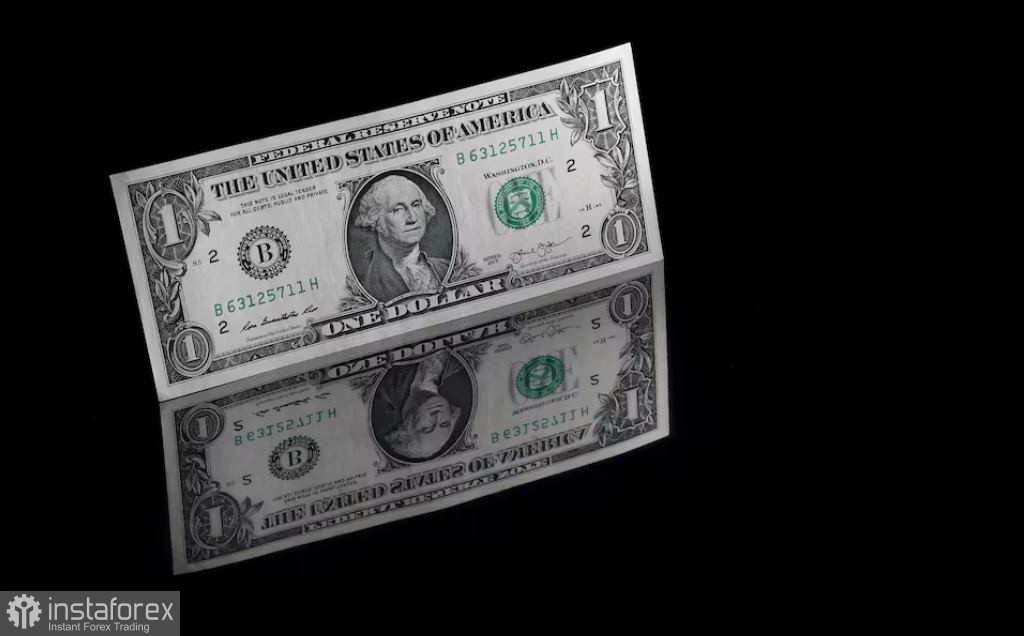The EUR/USD pair ended the trading week at the base of the 8th figure, specifically at the level of 1.0808. It was like a two-part movie: first, the dollar played the role of an outsider, and then it became the favorite. Hence, the relatively high volatility: the week's high was recorded at 1.0943, and the low at 1.0803. If we look at the weekly chart, we can see that the pair has been demonstrating a downward trend for the second consecutive week. But for EUR/USD bears, it was by no means an easy stroll, considering the mild outcomes of the Federal Reserve's March meeting. In addition, the further prospects of decline are also in question.
The dollar's decline
Dollar bulls painfully took in the outcomes of the Fed's March meeting. And although the central bank implemented the most expected scenario, the dollar broadly weakened across the market. The culprit was the dot plot, which has not undergone significant changes since its last update (that is, since December). To be more precise, the forecast for 2024 did not change at all: most members of the Committee still expect a 75-basis-point rate cut "in three steps." Forecasts for 2025 and 2026 were revised upward, but this clearly did not "warm up" dollar bulls, who were convinced that the Fed would now only agree to a 50-basis-point rate cut this year. The prospects for subsequent years are not particularly concerning to the public.

A week before the March meeting, the US published the inflation data. Both the Consumer Price Index (CPI) and the Producer Price Index (both overall and core) unexpectedly accelerated, landing in the "green." Only the core CPI index continued to decline.
Fed members were not alarmed by the "green tint" in the inflation reports (Fed Chair Jerome Powell called the February results "on the road to the target level") and reiterated their readiness to cut interest rates. However, it is uncertain when the first step in this direction will be taken. There were no hints in the accompanying statement, and Powell did not answer related questions. He merely reiterated that the Fed makes decisions at each meeting based on incoming data, so everything will depend on the dynamics of key indicators.
Nevertheless, following the March meeting, the market drew its own conclusions about the possible timing of the first rate cut. According to the CME FedWatch Tool, the probability of a rate cut at the next meeting in May is 12%. Whereas the likelihood of this scenario being realized in June is almost 70%.
In other words, the Fed did not postpone the date of the first round of interest rate cuts. Although following the outcomes of previous meetings, the "X hour" had been pushed further and further away. After the December meeting, hopes for a monetary easing in January melted away, and after the January meeting, the March prospects were nullified. Considering the fact that both the CPI and PPI accelerated in February, similar hopes were pinned on the March meeting. The central bank could have been concerned about persistent inflation, revised the dot plot (allowing only a 50-point rate cut), and used more hawkish language in the final communique.
But that didn't happen.
Dollar surge
Why did the dollar end the trading week "on top" rather than "on the mat"? After a sharp decline, the dollar started to experience increased demand without any visible fundamental reasons. Most experts point to the US Manufacturing PMI, which was published on Thursday. With a growth forecast to 51.8, it rose to 52.5 points. This is almost a two-year high - the strongest result since July 2022.
Such a result supported the dollar bulls, after which EUR/USD buyers took profits and handed the initiative to sellers. Market participants speculated that in the long-term, the interest rate level would be even higher than previously assumed (which, by the way, aligns with the updated dot plot). Dovish surprises from the Swiss National Bank (which unexpectedly lowered its rate) and the Bank of England (which softened its stance and allowed for more than one rate cut this year) also played a role in the dollar's growth.
Conclusions
The aforementioned fundamental factors are unable to provide sustainable support for the greenback. If the core PCE index (which will be published next week) lands in the red, the dollar will come under pressure again. In this case, the probability of a rate cut in June will increase to 80-85%, and some "hotheads" will talk about the chances of a rate cut in May. Although the prospects for May seem highly unlikely, the discussion itself will reduce the dollar's appeal.
Therefore, the dollar's surge shouldn't be trusted. You may consider short positions when the price consolidates around the 7th figure, below the support level of 1.0770 (the lower boundary of the Kumo cloud, coinciding with the lower Bollinger Bands line on the daily chart). However, the pair will likely drift within the 8th figure, as it waits for another impetus so it can leap towards the boundaries of the 10th price level.





















